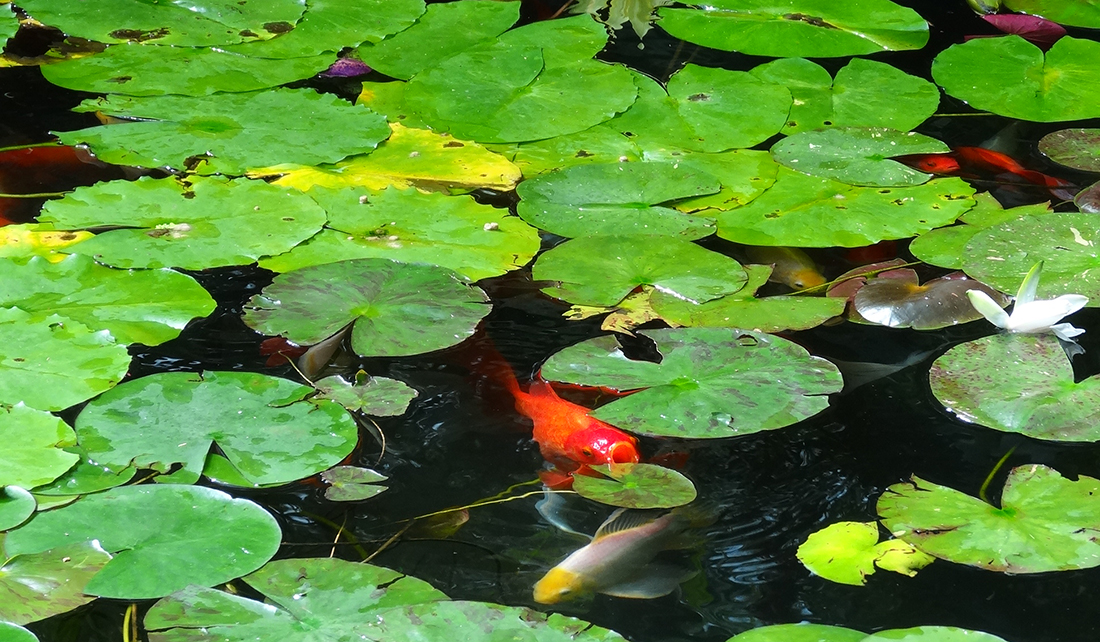June 10th, 2016 by IISG
 With the peak of summer right around the corner and gardening season in full swing, we’d like to use this moment as a reminder to be careful about what you choose to plant – particularly if you have a water garden.
With the peak of summer right around the corner and gardening season in full swing, we’d like to use this moment as a reminder to be careful about what you choose to plant – particularly if you have a water garden.
A departure from traditional dirt landscaping, water gardens come with their own set of complications and challenges when it comes to the spread of invasive species. Some key things to keep in mind – make sure your water garden is not near any waterways or flood-prone areas to reduce the risk of any species spreading to natural areas, and always rinse off any dirt or debris from all parts of the plant before planting, to get rid of any potential eggs, animals, or unwanted plant parts and seeds.
If you are planning on cultivating a water garden this summer, and would like more information, check out our brochure and handy wallet card for tips and guidelines on what precautions to take during the gardening process, as well as lists of what plants to grow and what plants to avoid.
These lists are the product of research conducted at Loyola University Chicago and University of Notre Dame, taking into account biological characteristics such as rates of reproduction and climate tolerance to determine which plants are most likely to become invasive. On the flip side, horticulturists and scientists from the Chicago Botanic Garden were consulted to figure out what native or non-invasive plants are the best alternatives. With this information, we hope you are successful in making your water gardens a little safer, and your summer a little more beautiful.
For more information on invasive species and what you can do to help, visit TakeAIM.org.
Illinois-Indiana Sea Grant is a part of University of Illinois Extension.
May 2nd, 2016 by IISG
Every spring, The Sun Foundation invites students, teachers, community leaders, and the general public to attend the Clean Water Celebration at the Peoria Civic Center. Through engaging hands-on activities and exhibits, this gathering encourages students and the public to learn how to improve water quality, to think critically and creatively about water conservation issues, and to protect and sustain our natural resources.
IISG educators, Terri Hallesy and Kirsten Walker, challenged students to tackle the issue of Asian carp invading new areas through IISG’s “Stop Asian Carp in Their Tracks” activity, a video about Asian carp in Illinois, and the website Nab the Aquatic Invader!
Presenters shared information about how this troublesome invader competes with native fish by eating lots of phytoplankton and zooplankton, the base of the food chain. Students learned how carp – which can weigh up to 60 pounds – become startled by boat motors and jump out of the water, smacking nearby boaters and anglers.
In small groups, students also discussed the location of Asian carp’s native habitat, how they arrived in the Midwest, and strategies to help reduce their populations. Students gained an understanding about the ways in which invasive species are introduced, the competitive advantages they have in their new ecosystems, and their huge impact on an area’s natural biodiversity.
As a result of these activities, students were equipped as agents for change to engage family and community members in understanding how they, too, can play an important role in stopping the spread of aquatic invaders.
February 3rd, 2016 by IISG
Members of IISG’s aquatic invasive species team are introducing their newest risk assessment suite of products today at the Illinois and Wisconsin Landscape Show in Schaumburg, Illinois.
The brochure, wallet card, and poster distill all the complexities of the species assessments done by researchers at the University of Notre Dame, Loyola University Chicago, and the Nature Conservancy. IISG facilitated the meetings between the researchers and retailers to ensure that the tools developed for them to use to assess the risk for invasion met the states’ needs.
These assessments provide retailers and hobbyists with information about whether a plant or animal imported for the aquarium and water garden trades poses a threat to the states’ waterways.
Greg Hitzroth, IISG aquatic invasive species outreach specialist will be urging retailers at the conference to not sell or grow plant species that are known to be invasive.
“The retailers and wholesalers—the types of folks who are at this trade show—want to do the right thing,” Hitzroth said. “And we’re here to help them.”
You can download the materials for free from these links! If you need a specific quantity, contact Danielle Hilbrich, aquatic invasive species outreach specialist, at hilbrich@illinois.edu.
What’s in Your Water Garden – Wallet Card
What’s in Your Water Garden – Brochure
What’s in Your Water Garden – Poster
![]() With the peak of summer right around the corner and gardening season in full swing, we’d like to use this moment as a reminder to be careful about what you choose to plant – particularly if you have a water garden.
With the peak of summer right around the corner and gardening season in full swing, we’d like to use this moment as a reminder to be careful about what you choose to plant – particularly if you have a water garden.
